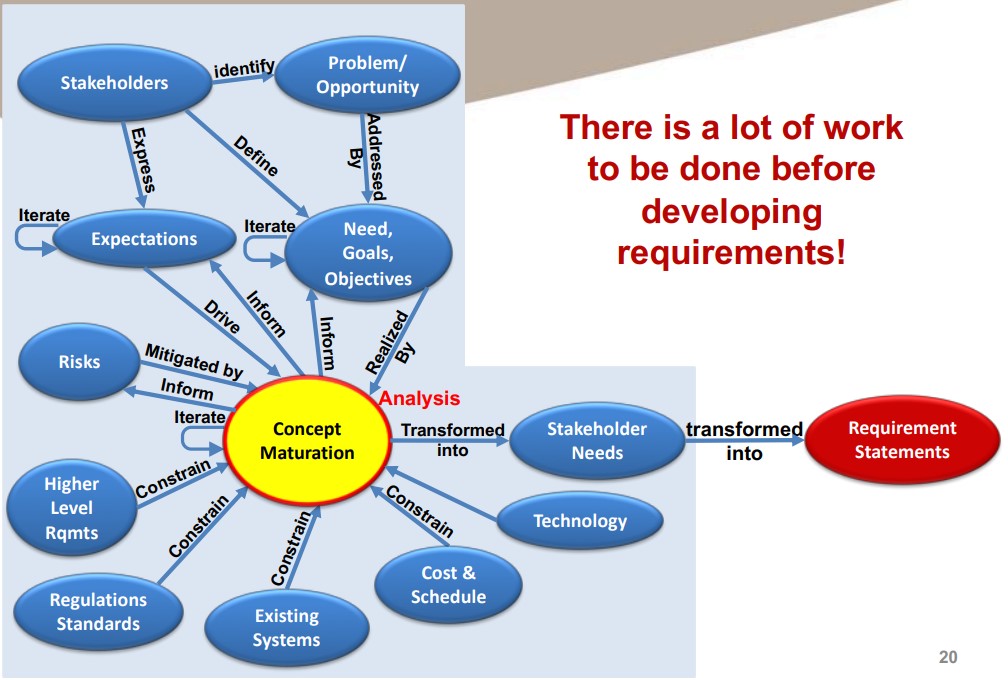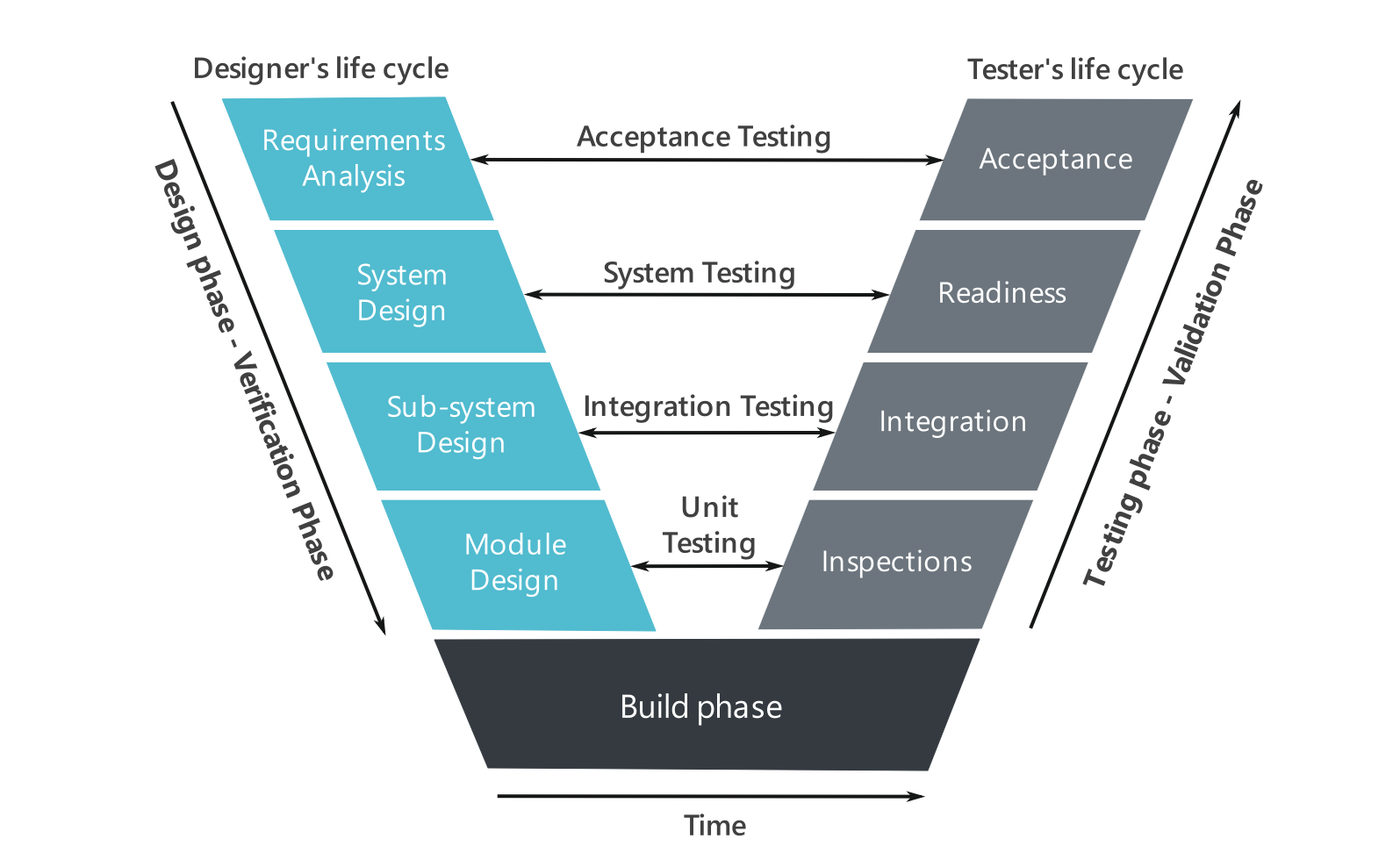Embarking on any system development project demands a firm grasp of the scope and stakeholder needs. These two facets underpin the very success of engineering endeavors, setting the stage for a outcomes. Without a well-defined scope, projects can easily veer off course, leading to cost overruns, missed deadlines, and unmet expectations.
This blog serves as a primer for professionals in project and systems engineering on how to effectively chart the course by identifying key stakeholders, clearly articulating the problem or opportunity at hand, and documenting essential project constraints. By mastering these preliminary steps, you ensure that the subsequent development of system requirements rests on a robust foundation, tailored to meet the nuanced demands of those invested in the project’s lifecycle.
Table of Contents
- The Importance of Scope in Systems Engineering
- The Concept Definition and Maturation Process
- Identifying Stakeholders
- Defining the Problem or Opportunity
- Establishing Need, Goals, and Objectives
- Eliciting Stakeholder Expectations
- Documenting Risks, Drivers, and Constraints
- Developing a Feasible Concept
- Documenting an Integrated Set of Stakeholder Needs
- Conclusion
The Importance of Scope in Systems Engineering
Defining the scope is a cornerstone in the bedrock of systems engineering. It sets the boundaries within which project teams operate, offering clarity and preventing scope creep—a notorious culprit in project failure. A meticulously carved out scope captures the aspirations and limits of a project, providing a blue map that guides teams through the intricacies of system requirements. It’s essential for minimizing risks and ensuring that the final deliverables align with stakeholder expectations.
Furthermore, establishing scope expedites decision-making and resource allocation, serving as a baseline against which project progress is measured. It’s a multifaceted veil that teams can use to sift and prioritize tasks, ensuring that each step taken moves the project in the right direction. In essence, scope articulation isn’t just about framing the outskirts of a project; it’s about engendering a common understanding that bridges the gaps between varied stakeholder expectations and the practical trajectories of system development. Engaging with scope early sets a precedent for accountability and precision as the project unfolds through its life cycle.
The Concept Definition and Maturation Process
At the heart of scope definition lies the concept definition and maturation process, a critical phase where ideas transition from nebulous thoughts to concrete plans. This process involves a deep dive into stakeholders’ needs, ensuring that their perspectives shape the project’s trajectory from the outset. It is here that teams come to grips with the system’s purpose and potential, setting the stage for actionable insights.
The maturation of the concept is a nonlinear journey. It begins with brainstorming sessions that map out the terrain, followed by meticulous analysis to refine these ideas into a feasible project blueprint. This stage is about testing the grounds—questioning assumptions, simulating outcomes, and examining the interplay of various elements within the project’s domain. It’s a phase characterized by iterative assessments that progressively sharpen the focus of the scope, ensuring that it reflects a realistic and attainable vision.
Effective concept maturation does not occur in isolation; it evolves through continuous stakeholder engagement, fostering a seamless integration of expectations and expertise. By meticulously refining the initial concept, teams lay a cornerstone that solidifies the project’s foundation, paving the way for a series of well-informed, relevant, and actionable system requirements.
Identifying Stakeholders
True success in systems engineering is contingent upon stakeholder identification. Recognizing who these stakeholders are is a pivotal step in weaving their needs, concerns, and expectations into the fabric of the project’s scope. As conduits of valuable insight, stakeholders include anyone who influences or is impacted by the project, from team members and customers to suppliers and regulatory bodies.
One must employ both methodical and inclusive strategies to chart this multiplex network. This is done by conducting thorough stakeholder analysis alongside workshops and interviews, which collectively unearth influencers who might otherwise remain in the project’s periphery. Proper identification ensures that no pivotal voice is muted, fortifying the project against unforeseen challenges that emerge from overlooked perspectives.
Effective engagement with stakeholders translates to a dynamic scope that accurately mirrors the diverse spectrum of expectations and requirements. By vigorously mapping out this landscape, systems engineers can prioritize needs according to their relevance and impact, equipping the project with the resilience to adapt and thrive amidst the complexities intrinsic to any development lifecycle.

Defining the Problem or Opportunity
Once stakeholders are identified, the next essential step in the process is defining the problem or opportunity that the project aims to address. This definition sets the compass for the project and ensures that all following actions are aligned towards a common endpoint. Articulating a clear problem statement or opportunity description is critical for crafting a scope that resonates with the project’s intended outcomes.
A well-defined problem statement acts as a catalyst for innovation and guides decision-making throughout the project’s lifecycle. It helps to crystallize the challenges and to distill the essence of what the project seeks to achieve. Crafting this definition requires an analytical approach, dissecting the core issues or opportunities and succinctly encapsulating them in a way that is universally understandable to all stakeholders needs.
Through this clarity, the project is provided with a goal-oriented direction, igniting the process of scope definition with a purposeful spark. This precise understanding also aids in the subsequent development of goals and objectives, laying a foundation for scope that is both strategic and focused. It refines the vision and, ultimately, becomes the litmus test against which project success is measured.
Establishing Need, Goals, and Objectives
Clarifying the project’s intention leads us to the pivotal task of establishing need, goals, and objectives. This triad forms the core from which the project scope derives its detail and direction. The stakeholder’s core needs lay the groundwork, informing the goals which in turn guide the establishment of tangible objectives.
Identifying these needs starts with active listening and empathetic engagement with stakeholders, ensuring their inherent requirements are accurately captured and understood. The resulting goals are broad statements of purpose that encapsulate the project’s aspirations and serve as guiding stars. From these overarching goals, specific, measurable, actionable, relevant, and time-bound objectives are distilled, providing clear milestones for gauging project progress.
Clearly set objectives also act as checkpoints for alignment and reevaluation, crucial when navigating the complex landscape of systems engineering. They imbue the project with strategic direction and ensure that every step taken is a step towards fulfilling the collective vision framed by the defined need and goals. This strategic articulation is the essence of a well-sculpted project scope that promises efficacy, relevance, and success.
Need, Goals, and Objectives Examples
These examples are structured to reflect a clear progression from broad, foundational needs to specific, action-oriented objectives. Needs express the underlying requirements that should be met, goals offer broad direction and purpose, and objectives define concrete, measurable actions to achieve those goals.
Needs
- Efficient data management system for improved decision-making.
- User-friendly interface to enhance client engagement.
- Scalable infrastructure to support future growth.
- Robust cybersecurity measures to protect sensitive information.
- Compliance with industry standards and legal regulations.
Goals
- To streamline organizational processes through digital transformation.
- To improve customer satisfaction through an intuitive digital platform.
- To ensure system adaptability to evolving business needs.
- To maintain the highest level of data security against emerging threats.
- To achieve full regulatory compliance within the next fiscal year.
Objectives
- Implement a new database system with data analytics capabilities by Q3.
- Redesign the customer portal for ease of use by Q2.
- Expand server capacity by 50% to handle increased load by Q4.
- Upgrade the company’s network security software and train staff on best practices by Q1.
- Complete a compliance audit and address all gaps by the end of the year.
Eliciting Stakeholder Expectations
With the foundation of needs, goals, and objectives in place, attention turns to the crucial process of eliciting stakeholder expectations. This step is key to ensuring the envisioned scope is in sync with the aspirations and concerns of those invested in the project’s outcome. Effective elicitation involves not just listening, but actively engaging stakeholders in dialogue, employing techniques such as interviews, surveys, and focus groups to draw out their anticipations and reservations.
Earning stakeholder trust through transparent communication enables a clearer understanding of their expectations. This understanding is vital, as it helps to refine the project scope and tailor it to match stakeholder requirements. Moreover, by inclusively addressing stakeholder expectations, systems engineers mitigate the risk of late-stage project reworks, which can be costly and time-consuming.
The act of elicitation is not a one-off event but an iterative engagement that evolves as the project progresses. This adaptability ensures the scope remains relevant and responsive to change. By precisely integrating stakeholder feedback into the project, the resulting blueprint becomes a collective construct, strengthened by diverse input and shared commitment.
Documenting Risks, Drivers, and Constraints
Once stakeholders’ expectations are woven into the project’s fabric, the focus shifts to documenting risks, drivers, and constraints. Meticulously recording these elements is a strategic move in scope definition, as it prepares the project for potential challenges and leverages influential factors favorably affecting the project’s flow. Risks encompass any uncertainties that could impact project deliverables, while drivers are forces that motivate the project’s progression, and constraints are the limits within which the project must operate.
Identifying and documenting these aspects early in the scope definition phase allows teams to anticipate obstacles and plan mitigation strategies, reducing the potential for unpleasant surprises later in the lifecycle. A comprehensive risk analysis combined with a clear understanding of project drivers and constraints enables the creation of a robust scope that is both ambitious and achievable.
Incorporating such foresight into the project planning process ensures a forward-thinking mindset, adapting the scope to fit real-world practicalities. Thorough documentation also provides a historical record for future reference, helping to avoid repeated pitfalls and reinforcing best practices. Ultimately, acknowledging and planning for these variables curates a project scope that is resilient, informed by experience, and primed for success.
| Risks | Drivers | Constraints |
|---|---|---|
| Integration difficulties with legacy systems | Increase in market demand for eco-friendly products | Limited budget due to funding cuts |
| Supply chain disruptions affecting raw materials | Organizational strategic shift towards digital transformation | Compliance with international data protection regulations |
| Security vulnerabilities in new software | Partnership opportunities with leading industry players | Resource shortages in skilled labor |
| Changes in customer preferences impacting scope | Technological innovations enabling cost reductions | Deadlines aligned with product launch events |
| Regulatory changes affecting product design | Increasing need for remote accessibility of services | Scalability constraints due to current IT infrastructure |
Developing a Feasible Concept
With a comprehensive understanding of risks, drivers, and constraints, the next decisive step in scope definition is developing a feasible concept. It’s at this juncture where stakeholders’ needs, documented expectations, and project realities converge to shape a viable and strategic plan. The focus here is on blending innovation with practicality, ensuring that the concept not only promises to meet expectations but also stands on attainable grounds.
Feasibility studies come into play, offering evidence-based assessments that evaluate the practical aspects of the proposed concept. These studies are instrumental in gauging the likely success of a project, examining the intricacies of implementation, including technical viability, cost-effectiveness, and operational sustainability. It’s a critical filtering process that transforms grand ideas into executable actions.
The journey from an initial idea to a workable concept is a process of refinement, demanding open-minded collaboration and creative problem-solving. It requires projects to strike a balance between ambition and existing project limitations, shaping a scope that is not only aligned with stakeholder needs but is also perfectly tailored to the project’s unique environment. This attuned concept sets the stage for requirements development, ensuring that they are rooted in the reality of what can be achieved.
Documenting an Integrated Set of Stakeholder Needs
Following the development of a feasible concept, the effort pivots to documenting an integrated set of stakeholder needs. This essential documentation acts as a keystone in aligning the multi-faceted perspectives of different stakeholders with the project’s deliverables. It is critical to not merely catalogue these needs but to synthesize them into a cohesive document that reflects the collective vision and ensures that nothing significant is lost in translation.
Integration of stakeholder needs involves discerning which requirements will drive the project forward and draw a clear line to the related business or technical objectives. This step demands rigor and analytical precision, as teams work to consolidate varying needs into a practical, unified set that will inform requirement development. The documentation is iterative; it evolves as needs are further clarified and as new insights emerge.
This distillation process facilitates a granular control over scope and prevents feature creep. It enables stakeholders to review and agree upon a mutually accepted set of needs before the detailed requirements are formulated. Such an integrated document becomes the touchstone against which all future project decisions can be measured, ensuring the final system reflects the true intent of its stakeholders.
Conclusion
In conclusion, establishing a clear scope and a profound understanding of stakeholder needs is critical before advancing to the intricate process of developing system requirements. From the rigorous exercise of identifying stakeholders to the precise baselining of the project’s scope, every step taken fortifies the foundation for successful system development. This strategic groundwork ensures that every action aligns with the unified vision and practical realities of the project, minimizing risk and facilitating effective communication and collaboration among all parties.
The journey of defining scope and documenting stakeholder needs is an ongoing dialogue—a balance of aspirations and constraints that guides the trajectory of system engineering. As professionals in this field, we are tasked with the crucial role of orchestrating this process, ensuring that each phase builds upon the last towards a coherent and achievable goal. By following the systematic approach outlined in this guide, project teams can navigate the complexities of requirements development with confidence and precision, ultimately leading to successful project outcomes that resonate with all involved.
Remember, the scope and stakeholder needs are not just the starting point, but also the continuous thread that weaves through the lifecycle of the project, keeping it relevant, focused, and on target.







